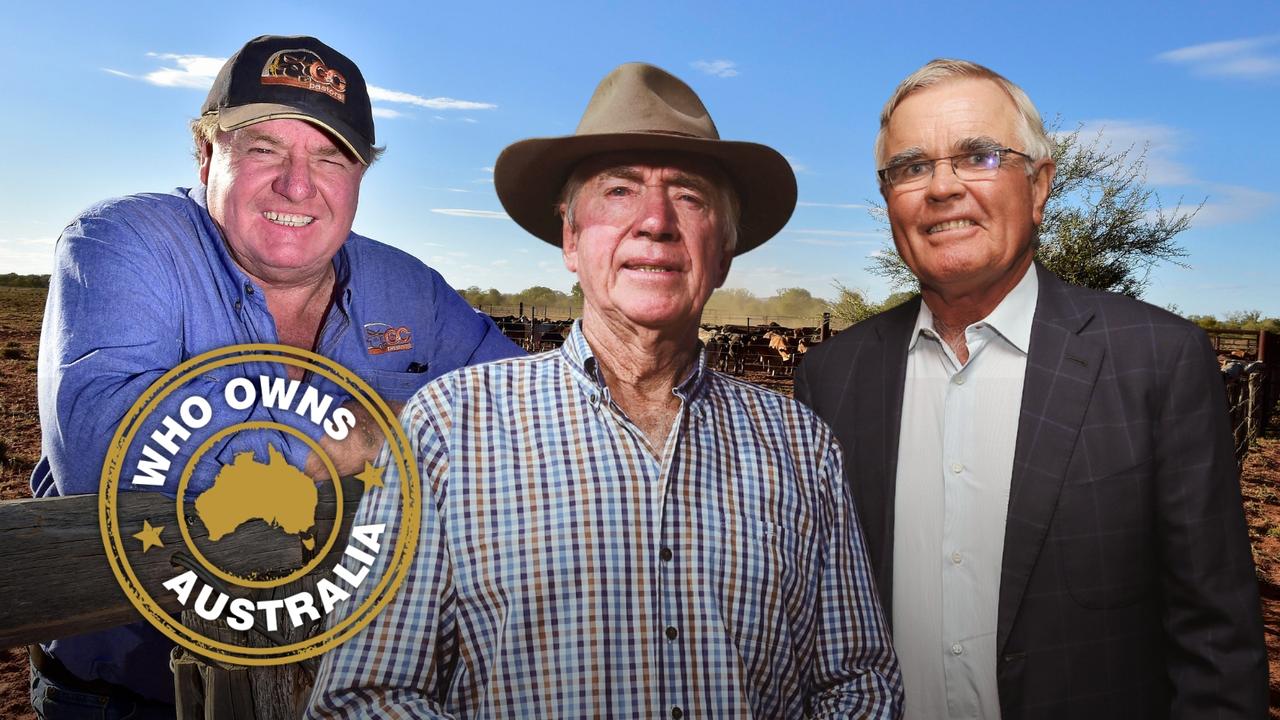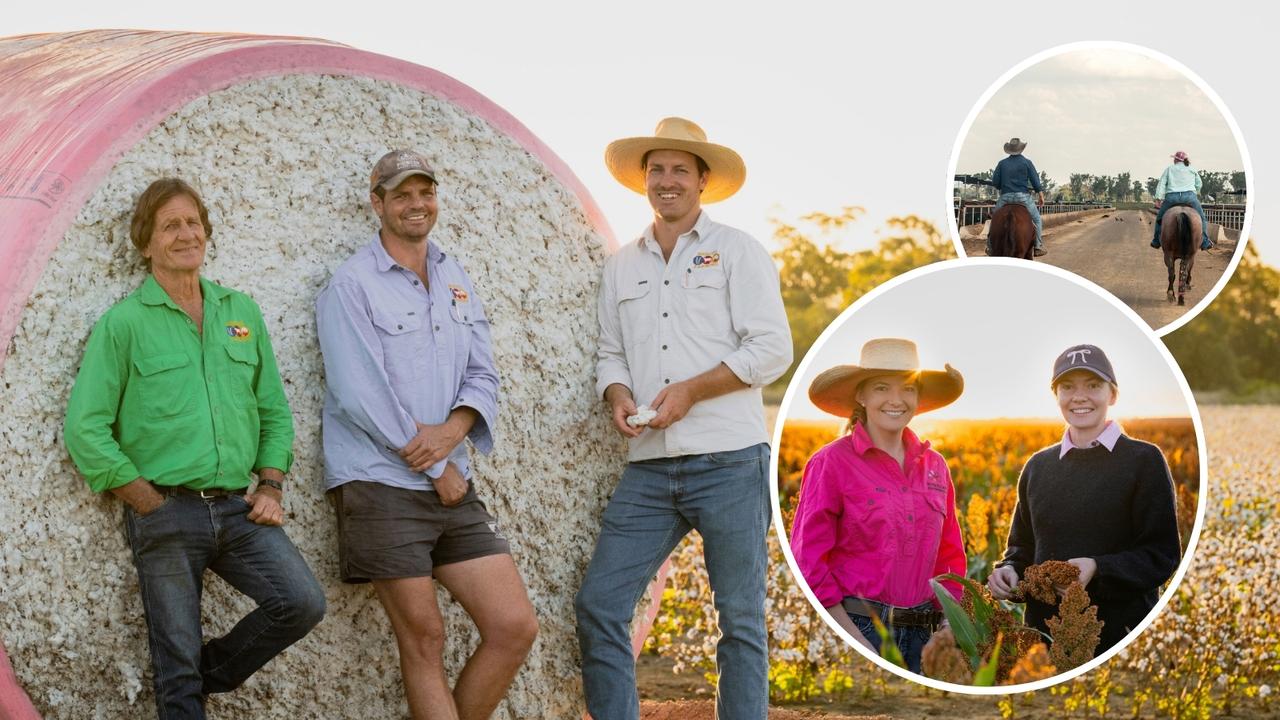Cattle Australia: Chair David Foote on industry influence, climate and female leadership
After building one of Australia’s biggest integrated cattle and meat businesses, David Foote is ready to give beef producers a more powerful voice.
David Foote crouches down on the shady banks of the clear-flowing Sandy Creek and wishes he had an old spade in his hand, a campfire burning and a piece of big juicy rump to hand.
A hot shovel is Foote’s favourite way of cooking steak when at home on his small southern Queensland cattle property near Kilcoy, whether sharing a rare quiet barbecue under the leafy trees by the creek with his wife, Marian, or rustically entertaining the visiting heads of some of China’s biggest meat companies.
And if anyone should know how to cook a good steak, it’s David Foote.
He is the man who has spent the past two decades building and running Australia’s biggest family-owned paddock-to-plate beef agribusiness, Australian Country Choice, owned by Queensland beef billionaire Trevor Lee and his family, with Foote as his loyal lieutenant and group managing director.
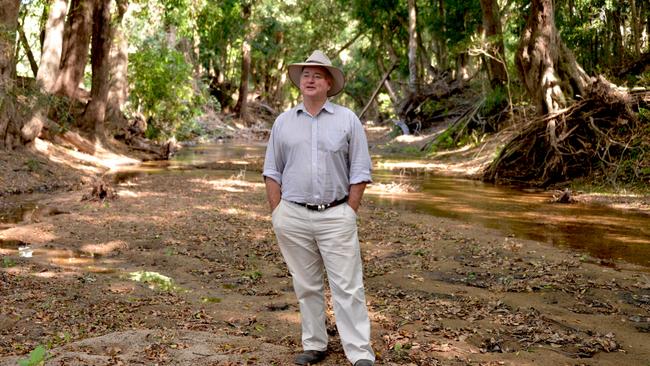
It’s a good chance most Australians will have at some time eaten meat from cattle born on some of ACC’s 42 Queensland cattle properties, reared on its grassy plains, fattened at its feedlots, and finally, slaughtered at its massive Cannon Hill meatworks in Brisbane.
Until 2020, the company exclusively sold all the beef from the 240,000 cattle it was processing annually to the national Coles supermarket chain – about half sourced from its own 300,000-head herd.
At the peak of its exclusive contract, ACC supplied 83 per cent of Coles’ national beef needs. Its beef sausages, mince, steak and rolled roasts effectively fed half of Australia’s population.
It is popular folklore in the meat industry that the beef sausages made at Cannon Hill each year for its Coles contract, if all joined end to end, would have ringed Australia’s 34,000-kilometre coastline.
Now the straight-shooting Foote, 68, who has worked in agriculture all his life across southern and northern Australia, is about to face a new challenge that will thrust him fully into the national spotlight.
The man regarded as one of Australia’s most seasoned, experienced and pragmatic men in the $16 billion beef industry, has just been appointed leader of new industry body Cattle Australia.
It plans to directly represent all 42,000 Australian beef cattle producers vocally and strongly on the national stage, potentially challenging the Canberra-centric dominance of the 43-year old National Farmers’ Federation in political, national and global affairs.
A major shake-up of farm affairs in Australia now looms.
Significantly, Cattle Australia will not be part of the current representation system that sees farmers first become paid members of their own state farming organisations, which then in turn pass on a portion of membership fees to fund the NFF and other national farmer bodies representing different commodities such as cattle and grain.
This funding pyramid has led to a labyrinth-like structure that many farmers claim is too complicated, too divided, overly bureaucratic and totally toothless. There are now a total of 237 agricultural bodies and groups spread across Australia claiming to represent a subsection of farmers or their industries.

It has also left the beef cattle industry, which is Australia’s biggest agricultural sector, often feeling under-represented on both the national and world stage by the NFF structure. It contests that small boutique industries and farmers in southern states often seem to get as much attention and focus from the NFF as it does, with the dominant Queensland and NT beef cattle industry claiming to miss out most.
David Foote sits squarely in this camp. The man who for 20 years ran the company supplying most of the beef sold to most Australians, simply says it is time for action.
“It is just wrong for the largest agribusiness sector in Australia to not have its own organisation dedicated to it and speaking for it,” Foote says. “There are 42,000 beef farmers in Australia; half of them run only beef cattle, and 28 million cattle are run on 42 per cent or 154 million hectares of Australian grassland. We need a directly elected body to represent us.
“I don’t want to be in competition with state farming organisations – Cattle Australia is not about helping the bloke down the road fix his creek crossing.
“But when it comes to national issues such as market access, animal welfare, sustainability, exotic diseases, live export or negotiation of future free trade agreements, we think Cattle Australia should be, and will become, the true voice of cattle producers and the beef cattle industry to the federal government.”
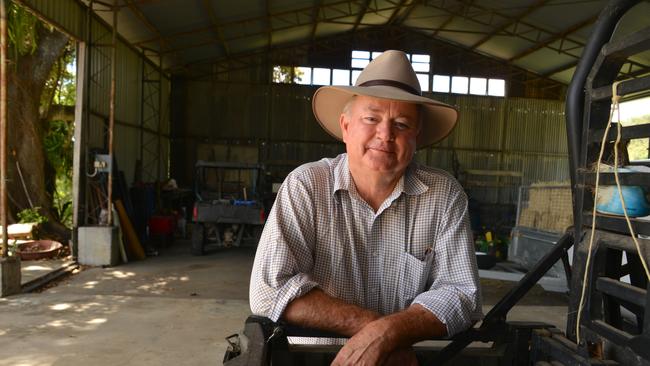
WORKING UP THE CHAIN
While Foote is not exactly a household name, in agribusiness circles it is hard to find a more respected man.
Born into a family of struggling dairy farmers near the Flinders Ranges in outback South Australia, Foote has no farming blue blood coursing through his veins.
Instead his grandfather was a legend in the national labour movement in the 1920s and ’30s, through the firefighters union. Instead Foote has made his way up the agribusiness ladder to its highest echelons through sheer grind, grit and practical talent.
His early CV reads like an adventure thriller; helping out as a kid at the vast Peterbough sheep sales for Elders, making concrete cattle troughs on the edge of the Nullarbor, working for the South Australian department of agriculture at its groundbreaking beef research centre at Naracoorte, and even a stint employed in the underground nickel mines near Kalgoorlie, which gave a young Foote a rare insight into secret ballots, no ticket no work, the good and the bad of unions, and the horror of workplace accidents and deaths.
Then it was back into serious agriculture, with successive jobs – increasingly in management as his experience grew – for established farming families such as South Australian sheep barons, the McBrides, Prime Minister Malcolm Fraser at Nareen in Victoria’s Western District, the Michell wool family in the Riverina running 30,000 ewes, and finally in the late ’80s and ’90s, for 13 years with the extended Myer family in Victoria and southern NSW. It was with the Myer family, through their Laradoc Pastoral company and Hereford cattle, that Foote got his first taste of paddock-to-plate farming, pioneering the group’s Countryside Butchers brand with its own shop in Albury and meat sold in supermarkets across Australia, and exporting overseas as Laradoc Gold beef.
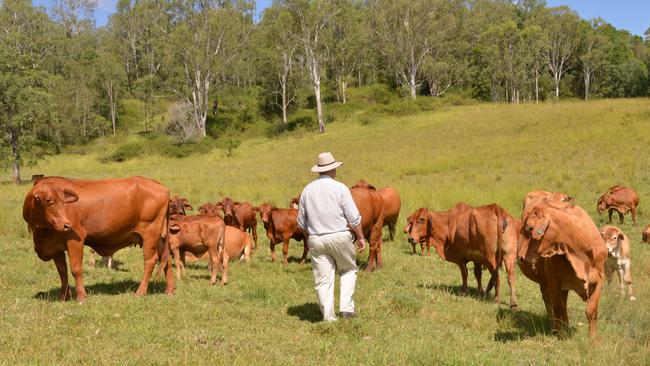
“My learnings there were that a good brand is all about your story, your quality, your truth and your exclusivity,” Foote says. “And that as long as you have truth in labelling and the quality is there, never lower your prices.”
Stints followed working as development manager and then group manager with Australia’s then-largest cattle company, Stanbroke Pastoral. It was the first time that Foote had to work with mining companies when the world’s largest copper mine was proposed to be built on Stanbroke’s Fort Constantine station near Cloncurry.
It made him realise that producers really only own the land surface where their cattle run, and of how mining can so rapidly deplete precious underground water held in aquifers: “the lifeblood of (outback) pastoral stations,” Foote says.
“It’s also why I’ve turned into an absolutely anti-coal seam gas man,” he says, acknowledging many Australians do not realise farmers are avid environmentalists.
After Stanbroke, where he helped develop its own famous Diamantina beef brand, Foote moved to southern Queensland to be head of the Kilcoy export meatworks, to fill in the “missing piece” of his cattle industry experience, meat processing.
In 1998 Foote was appointed managing director of Australian Country Choice by ambitious beef producer Trevor Lee, who he knew slightly from his Stanbroke days. It was an auspicious appointment.
When they met, the Lee family owned just two small feedlots holding 6000 cattle and two cattle stations, Brindley Park near Roma and Babbiloora cattle station in brigalow country at Augathella. Their ACC business had just 110 employees and a small contract to supply Coles in Queensland with a bit beef.
But Trevor Lee was already thinking big. At their first meeting, his new boss and now close friend rolled out an ambitious 10-year blueprint to buy more cattle, outback properties, feedlots, and an abattoir and become Australia’s first large-scale vertically integrated beef supply chain.
“It was one of those win-win situations,” says Foote of the groundbreaking ACC-Coles contract of 2000.
“They gave us a then-unheard-of 10-year meat supply contract on a cost-plus basis, which lasted 20 years; it effectively financed ACC’s expansion to become Australia’s largest paddock-to-plate vertically integrated beef supply chain.”
The exclusive supply contract between Coles and ACC – all the while with Foote at the helm – lasted an extraordinary 20 years. It allowed ACCC to buy more properties – now spread across 1.75 million hectares of Queensland – do a joint venture deal with the Acton cattle family in 2015, acquiring one million-hectare grazing station Barkly Downs near Mount Isa, build its herd to 300,000 head of crossbred cattle, and quietly become one of the biggest cattle producers in Australia.

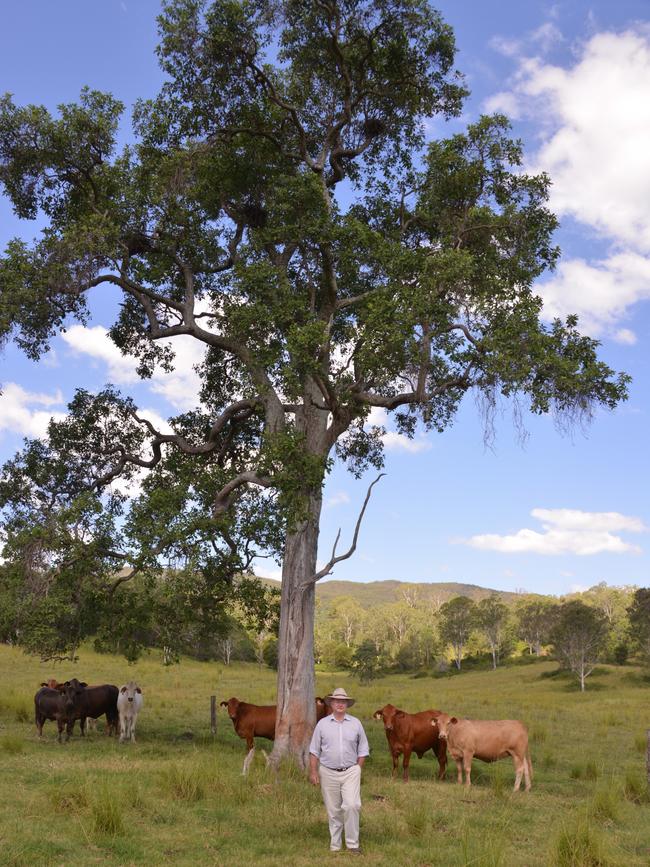
“It was exciting, no one else was doing it from paddock to plate,” recalled Foote, last month at home on his Mount Kilcoy farm Tandarra, just a week after he had hung up his boots as a full-time executive with ACC. (He still remains chairman of the family company’s advisory board).
“But (that Coles deal) allowed us to expand and catapulted Australian Country Choice (and the Lee family) into the big league, one of only three or four Australian families that owns and farms more than 150,000 cattle, and the only one that takes it completely through the supply chain from paddock to plate, or farm to fork.
“Yet not many Australians have even heard of us; we’ve never made much noise about what we do.”
All the beef sold by ACC was unbranded; prepacked on trays in meal portions but marketed under Coles’ own meat label, meaning the importance of the Lee family, David Foote and Australian Country Choice to Australia’s food supply remained largely invisible.
Eventually Coles, now owned by Wesfarmers, became “uncomfortable” that it was dependent on so much of the volume of its meat coming from just one source. By 2020 the unique arrangement had ended, allowing both parties to go their separate ways.
Foote steered Australian Country Choice through this next big change. Angus and Wagyu cattle were introduced on some of its stations replacing cattle with Brahman bloodlines, ACC rolled out its own Crown grain-fed beef brand that is sold locally and exported, and Woolworths became a major customer of about a third of ACC’s massive meat output.
“Now, after what would have been my 25th year heading ACC,” he says, “it’s time for a new challenge.”
A NEW BEGINNING
The formation of Cattle Australia, which came into existence late last year, is already contentious.
First the new organisation has to work out its funding model, trying to encourage as many beef producers as possible to join and make it strong. Commercial sponsorship from large agribusinesses is also in the wings.
It already has a seven-member board, including rising agribusiness mover-and-shaker Bryce Camm and its NSW-based deputy chair is agri-investment specialist Garry Edwards of the AAM Investment Group.
“We need a fresh approach to get unity; a board that is directly elected by producers not appointed by state organisations,” Edwards says. “We, as cattle producers, are losing the debate around methane emissions; it is so wrong that so many people now think that instead of grazing animals being part of the natural carbon cycle for millions of years, that they are somehow now bad for the environment.”
Foote is determined that his role is to go in to bat for the beef industry on the importance of sustainability and the environment. But he is not convinced that the current carbon accounting systems which claims 11 per cent of Australia’s total carbon emissions come from the national beef cattle herd, are correct.
“We are not climate deniers – it is the cattle industry that has been leading the way on emissions with a target of carbon neutrality by 2030, 20 years ahead of the government – but we do want reality injected into the argument,” Foote says.

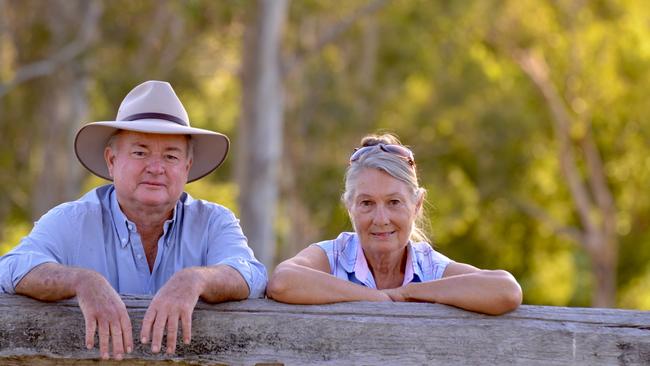
At the core of the rationale behind the formation of Cattle Australia is also money. Every year, every time a steer or cow is sold, farmers pay $5 a head to fund industry marketing and research and development. That is a contribution of $62 million a year to industry body Meat and Livestock Australia, matched by government funding. Yet the MLA is not allowed to advocate, lobby or take any “political” position on behalf of its producers.
Many northern cattle producers also believe too much of its research focus is dedicated to the green grass, small farms of Victoria, NSW and Tasmania, rather than to the very different conditions of northern Australia where half the herd is based.
Then there is also the issue of female representation on the new body. Only one woman is on the Cattle Australia board, Elke Cleverdon, when the previous Cattle Council of Australia had an equal gender balance of directors.
Foote himself did not help when, in a podcast just after his election as Cattle Australia’s new and first chairman, he said “women are a huge part of our industry; they’re there [at] every kitchen table in a partnership … they’re equals, they do the banking, they do the books, plus manage the house.”
Foote, whose independent wife Marian of 46 years runs the Charolais cattle herd and farm affairs on Tandarra and told him off for his poor choice of words, says now he was “clumsy” in his expression.
“What I meant was that women on cattle properties do it all; that in addition to running farms, flying planes, mustering cattle, everything that male producers do, they also have additional skills,” he says. “We have many outstanding women in the cattle industry – look at Prue Bondfield – and I have said we are underweight with women on our new board and would like to see more; but the whole point of having this new directly elected organisation is that everyone has to stand, run and get elected, and not be there just because of their gender.”
CAMM DO ATTITUDE
If David Foote is the experienced, old-guard hand at the helm of the new Cattle Australia board, Bryce Camm is its future.
Thirty years younger than Foote, Camm comes from one of Queensland’s best-known cattle families. The Camm Agricultural Group, which he leads as chief executive, breeds and fattens 60,000 cattle across nine stations covering nearly half million hectares of Queensland, as well as running a 15,000-head cattle feedlot.

Camm, 38, has already notched up more than 10 years as a director of the Australia Lot Feeders Association, the last three as its chairman, runs the board of the massive Beef Australia expo held at Rockhampton every three years, is a previous chairman of the Australian Beef Sustainability Steering Group and a past winner of the prestigious Rabobank Emerging Agribusiness Leader award.
He has also long-championed the need for the powerful Australian cattle industry to have an independent, directly elected voice representing all 24,000 beef cattle producers.
A fiercely proud “true Queenslander”, Camm was elected as one of the seven directors of the new Cattle Australia board in December, representing the northern cattle industry where more than half of Australia’s 27 million cattle live.
He admits swinging more political and lobbying might back into Queensland hands is one of the rationales behind the need for the formation of Cattle Australia, instead of a power structure that gave each state, even tiny Tasmania, effectively equal say in cattle industry affairs.
“Queensland is the beef state, the powerhouse, of the country when it comes to cattle and the old structure of the Cattle Council of Australia (based in Canberra and funded via state farming organisation membership fees) did not adequately reflect where the cattle are,” Camm says.
“It’s really important for a national voice representing the cattle industry to truly reflect the makeup of the industry, rather than being influenced by state borders.”
FROM PADDOCK TO PATIENT
One of David Foote’s proudest initiatives during his 21 years running the giant Australian Country Choice cattle and beef operation is probably also its least known.
In the past few decades ACC, like most other major meat processors, has sought to boost its income from other parts of the carcass that were not previously used.
Often, the highest value extras have been linked to organs and offal for eating.
But in the past few years, the real “gold” from the processing line at Australian Country Choice’s massive Cannon Hill abattoir, which slaughters 350,000 cattle every year, has been bovine pericardium for medical use.
The pericardium is the thin but durable tissue sac or lining gathered from around the heart. In an unusual twist of evolution, human and cow heart valve tissues are very similar.
ACC is now the world’s biggest supplier of bovine tissue valves for humans, manufactured by global heart valve manufacturer Edwards Life Sciences.
Where once actual pig heart valves were used, the artificial heart valve replacements from bovine pericardium tissue have less chance of rejection, suit the human heart better and do not increase the likelihood of blood clots forming.
David Foote says he was initially sceptical about the niche application when he was approached by the US manufacturers.
“What attracted (Edwards Life Sciences) to (ACC) was that we are one of the few large beef processors with a fully integrated supply chain that can offer complete traceability of all our individual cattle from birth, including many of them being born on our own farms,” explains Foote.
Foote says that, apart from the financial returns, it feels good to have played a small part in saving the lives of the 17 million people who have been fitted with replacement heart valves made from bovine pericardium in the past 15 years.



